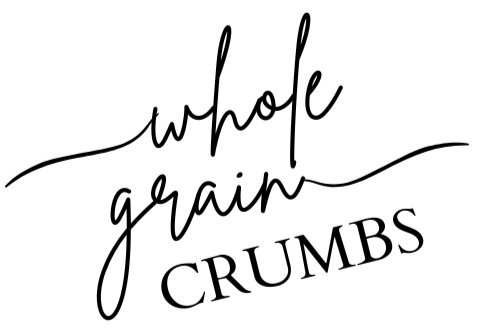Pumpkin is Not Just a Seasonal Trend - Registered Dietitian's Top 3 Reasons to Eat Pumpkin
Pumpkin is not just a seasonal trend or decoration to be displayed every Autumn. Pumpkin is also a nutritious and delicious starchy vegetable that offers nutrition value to add to meals, snacks, desserts, and beverages.
IS PUMPKIN GOOD FOR YOU?
Pumpkin can be a fun and nutritious addition to meals around the holidays and year round. If you do not have an allergy to pumpkin and you enjoy pumpkin, pumpkin is definitely good for you! If you’re just not a fan, that is okay. You can get the nutrition of pumpkin from a variety of other fruits and veggies.
PUMPKIN & WEIGHT LOSS
Pumpkin can play a role in a healthy weight loss similar to other fiber rich foods. Fiber can help regulate digestion and help with satiety at meals which is helpful in weight loss journey. Adding pumpkin into your meals for weight loss will not = weight loss like a magical fix. But can certainly be paired along other vegetables with protein, carbohydrates, and healthy fats to create balanced meals/snacks that support weight loss goals. If you see a diet of only pumpkin for weight loss, red flag! Any diet that promotes eating only 1 food and removes foods, is not going to be sustainable and most likely not enjoyable despite how much you might enjoy pumpkin.
WHY IS PUMPKIN FOOD FOR YOU? …3 BENEFITS OF PUMPKIN PUREE
Dietary Fiber. 1 cup canned pumpkin puree contains 6 grams of fiber which is 22% daily value. Fiber is helpful for supporting regular bowl movemnets, regulating satiety, portion size management, and support healthy cholesterol levels. Most Americans consume half of their daily fiber needs, so choosing fiber rich foods often can help reach your daily fiber needs. Most females need about 25 grams of fiber per day and males need about 35 grams per day. As always it is important to not everyone is different and therefore everyone's nutrient needs is different - which is why it is so important to meet indivually with a registered dietitian (RD) / registered dietitian nutritionist (RDN).
Nutrient rich. Pumpkin contains carotenoids, polyphenols, and antioxidants - all of which can protect against certain chronic conditions by reducing incedence. The antioxidants in pumpkin include carotenoids, lutein, zeaxanthin, vitamin E, ascorbic acid, phytosterols, selenium, and linoleic acid.
Beta Carotene and other phytochemicals. Beta carotene, a powerful antioxidant found abundantly in pumpkin, plays a crucial role in maintaining eye health and supporting the immune system. Studies have shown that beta carotene can be converted into vitamin A in the body, which is essential for vision, particularly in low-light conditions. Additionally, its antioxidant properties help combat oxidative stress, potentially reducing the risk of chronic diseases. Including pumpkin in your diet can be a delicious way to boost your intake of this important nutrient.
USE OF PUMPKIN
The following are ideas that pumpkin is good for and great use of pumpkin for health benefits.
(1) Homemade pumpkin spice latte. Making a homemade version is lower in added sugar and can easily be converted to dairy free if you have a dairy intolorance or preference. If you enjoy cow dairy, making homemade variation gives you more flexibility of milk fat % by choosing non-fat, 1%, 2%, or whole milk.
(2) Pumpkin Seeds - in trail mix, over oatmeal, roasted with cinnamon, or used in baking as an added crunch. You can roast your own pumpkin seeds or purchase pre-shelled pumpkin seeds. Pumpkin seeds are also sometimes called "pipits".
(3) Pumpkin Pie - yes even pumpkin pie can still be balanced. With desserts we typically want to look at portion size, how often we’re eating it, and seeing if we can balance it by adding other food groups.
(4) Pumpkin Soup - similar to a creamy tomato soup, a creamy pumpkin soup is delicious. One of my favorite ways to enjoy pumpkin soup is with a turkey and Swiss panini on a crusty, whole grain bread with dijon mustard.
(5) Pumpkin Pasta - similar to a pasta a la vodka or tomato romano sauce, a creamy pumpkin based sauce can be used to top a pasta dish. To add more fiber and protein to this meal, try pairing with sausage, chicken, or a protein pasta (such as Barilla Protein +, Banza Chickpea Pasta, or Good-les)
(6) Pumpkin Smoothies - pretty much pumpkin pie in smoothie form! Typically pairs nicely with banana for sweetness, cinnamon, nutmeg, soaked dates, and topped with a cinnamon-y granola for crunch.
IS PUMPKIN HIGH IN CARBS?
Pumpkin is a starchy vegetable so it does contain carbohydrates. For canned pumpkin puree (not pumpkin pie filling!) … 1/2 cup = 10 grams of carbohydrates. Depending on the recipe used with pumpkin there might be other carbohydrate sources such as pasta, flour, added sugars, bananas, oats, etc.
References:
https://www.ncbi.nlm.nih.gov/pmc/articles/PMC10030350/
Disclaimer: The information provided in this blog post is for educational purposes only and should not be considered medical advice. Always consult with a qualified healthcare professional or registered dietitian for personalized guidance and recommendations regarding your health and nutrition.






